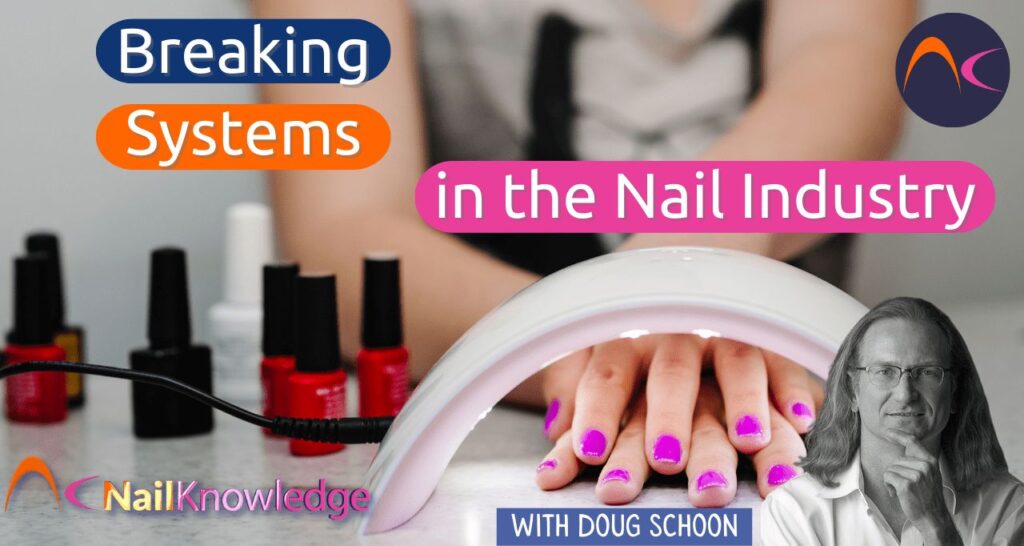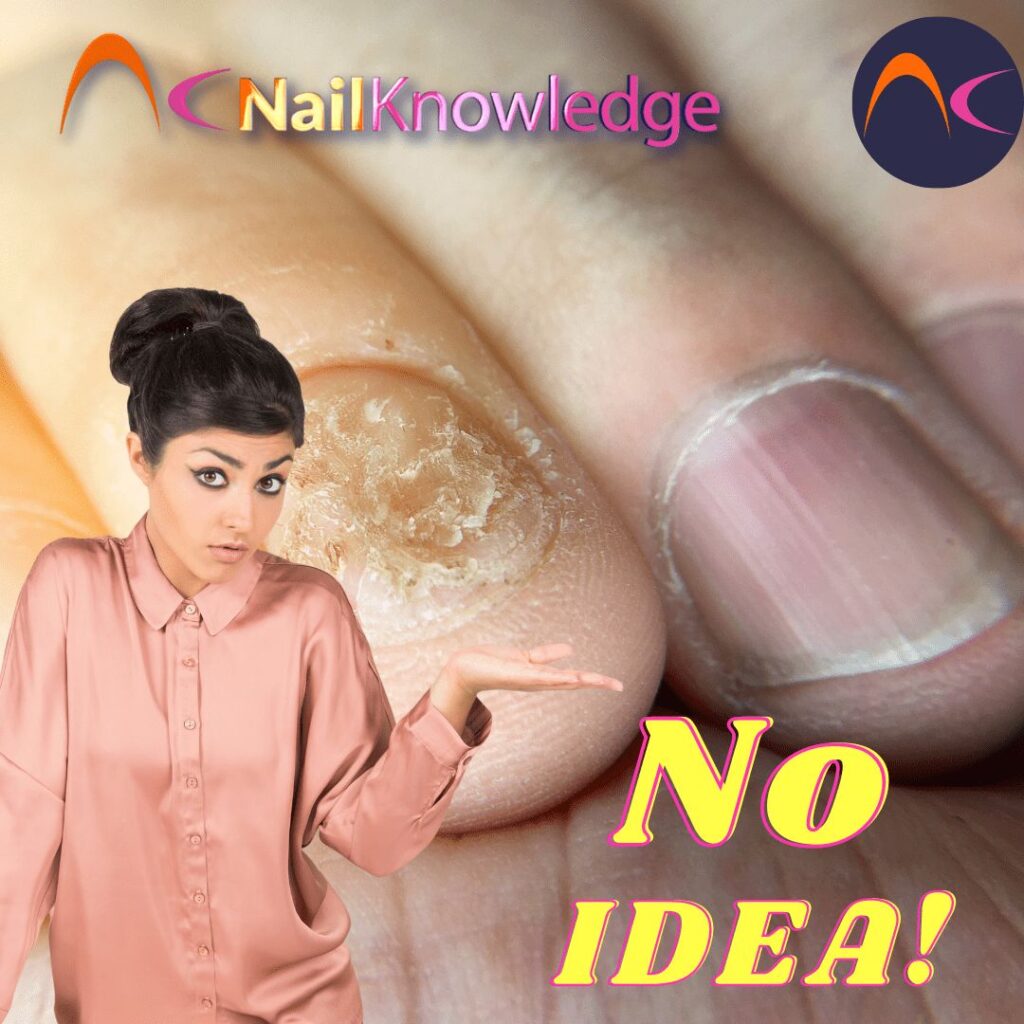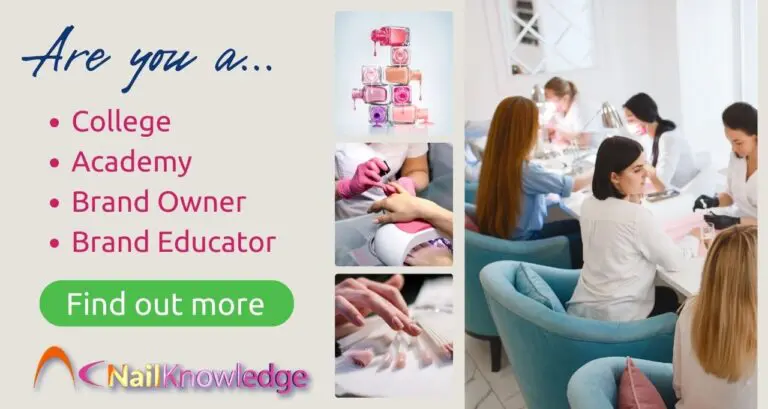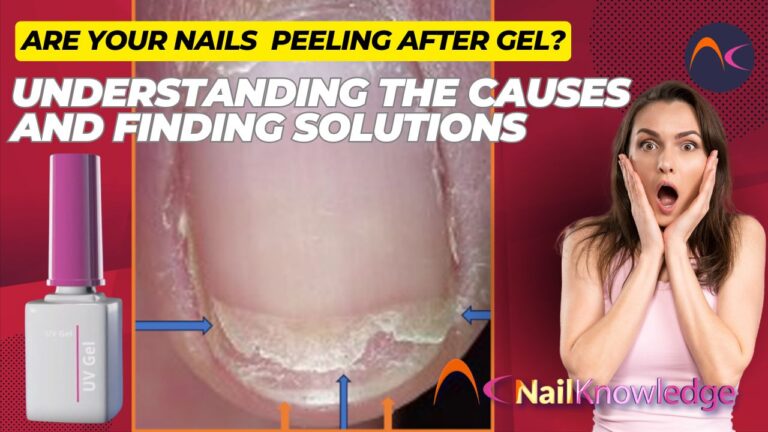The Extent of “Systems” in Nail Products
Any company would like you to apply their nail polish to their enhancement products and to use their nail oil or hand lotion but these aren’t the systems I’m concerned about. I’m talking about matched pairs of products that are designed to be used together in order to function properly and safely. Good examples are monomer liquid and powder or UV gels and nail lamps. Even primers, removers and nail prep products are often formulated and tested to ensure they work well together and are compatible.This question that was asked really isn’t about breaking systems; it is actually about following directions.
Adding Pigments, Glitters, or Nail Foils: Are You Breaking the System?
Adding something to a nail powder or UV gel that wasn’t designed for that product may mean you’re using it incorrectly. The nail professional is skipping all the testing a manufacturer would normally do to ensure an additive is safe and effective. Just because nothing happens when this is done, doesn’t mean much. I can close my eyes for 30 seconds while driving. Just because I don’t have an accident, doesn’t mean that driving with my eyes closed is safe or wise.
Often there are long term consequences related something a nail professional started doing a year ago. For instance, some clients may take many months or even years to develop an allergic reaction. Small changes may affect only small percentage of clients, causing them to have service breakdown. Often nail professionals blame such problems on something the client is doing. Many times it’s related to something they changed months ago.
The Dangers of Mixing and Misusing Product Lines
When product lines are mixed together and not used as they were designed, unexpected consequences can occur. Don’t expect some kind of warning, instead understand that you’ve created a situation where something unexpected and surprising may eventually happen. This could put you and your clients at increased risk for something to go wrong. It may not happen today, maybe not tomorrow, but maybe in month or a few years. Perhaps it will be a combination of several changes over time that will trigger unexpected problems. This isn’t just speculation, I’ve seen this happen many times.
Challenges in Identifying and Resolving Problems
When the issue occurs, the nail professional has no idea how to solve the problem because it is related to many things they are doing and not just one. Here is an example: a nail professional may decide to mix a pigment into her UV gel and doesn’t notice any problems over the next month. A few months later, she buys some nail foils at a trade show and still doesn’t notice any problems. She reads on the Internet about a new UV base gel someone is raving about, so she tries it. Then she buys a different UV nail lamp that’s on sale, when the old one wears out. Six months later, she notices that several of her client’s nails are breaking more easily and she’s doing more repairs than ever before. A few clients develop oddly discolored nail plates and several are becoming sensitive, the skin around their nails is red and swollen or the nail bed is feeling tight or itchy. What’s going on and how can she solve these problems?
Many struggle with such problems all the time and don’t ever solve them. These things happen all the time and I get questions like this on a weekly basis. Over the years I’ve noticed that nail professionals rarely think it is something they are doing, most blame the products or the clients.
The Role of Nail Technicians in Preventing Issues
Anyone who’s ever educated for a nail company or worked their company’s Educational Hotline can tell you a hundred stories like this. It might be something the client is doing or a defective product, but in my experience, most often it’s something the nail technician is doing/not doing. Skin reactions usually occur because nail professionals make up their own directions, mixing different product lines together, creating their own blends or improperly applying, curing or removing the nail coatings. I understand that nail professionals consider themselves artists and want to be creative, but painting a canvas or sculpting in wood is not the same as working on someone’s nails and skin.
Addressing the Challenges for a Safer Nail Industry
The Importance of Adhering to Manufacturers’ Instructions
In the ever-evolving nail industry, it is crucial to address the challenges that arise when deviating from manufacturers’ instructions and introducing new products that fall outside the brand. One of the most significant concerns is the limited support provided by customer care in the event of problems. When nail professionals mix and misuse product lines, they expose themselves and their clients to potential risks without explicit warnings.
The consequences of these actions can be unpredictable and far-reaching. Issues may not surface immediately but can manifest months or even years later, leading to allergic reactions, service breakdowns, and client dissatisfaction. Unfortunately, when such problems occur, nail professionals often find themselves ill-equipped to address them. The accumulation of multiple changes over time makes it challenging to identify the exact cause, exacerbating the complexity of the issues at hand.
Nail technicians may inadvertently contribute to these problems by experimenting with product mixtures or disregarding proper application, curing, and removal techniques. It is important to recognize that the artistry involved in nail enhancements differs significantly from traditional artistic mediums like canvas or wood. Failure to adhere to manufacturers’ instructions can result in skin reactions, formulation discrepancies, or the improper application of nail coatings.
The prevalence of these challenges has prompted some individuals to leave the nail industry, while dissatisfied clients warn others to avoid artificial nail coatings altogether. However, there is a solution: education. Nail professionals must equip themselves with comprehensive knowledge and diligently follow manufacturers’ directions. Only through this commitment to using professional nail products properly and safely can we hope to alleviate the ongoing challenges that plague the industry.
Let us strive for a safer and more successful nail industry by embracing the importance of adhering to instructions and fostering a culture of education. By taking the initiative to educate ourselves and others, we can contribute to positive change and ensure the well-being of both nail professionals and their valued clients. Together, we can navigate these challenges and create a safer, more reliable nail industry that thrives on expertise and adherence to manufacturers’ instructions.











